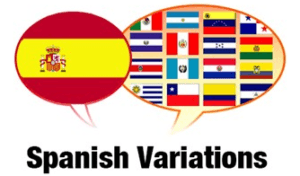Translating Spanish: Latin America or Spain?
April 18, 2016 – Language Connections, a Boston-based interpretation and translation services company is often asked to work on projects handling various topics that must be translated into Spanish for different Spanish speaking audiences. Many of our clients are well aware of the fact that the Spanish language is spoken in countries other than Spain, but they may not be aware of the significant differences in the spoken language, and how these are relevant to translation.
With more than 470 million native speakers –according to the CILE, held recently in Puerto Rico-, Spanish is the second most-spoken language in the world, and the most popular second language learned in the United States. Today, the U.S. has one of the highest concentrations of Spanish speakers in the world, more than Spain itself and second only to Mexico. However, there are many different varieties of Spanish, from Castilian Spanish in Europe to Latin American, to African Spanish in Equatorial Guinea.

According to President of Language Connections, Leo Galperin,
“This issue arises primarily because many people are not aware that there are any significant differences between the Spanish spoken for example in Mexico, Puerto Rico or Argentina. Or even within Spain itself for that matter.”
One of our in-house Spanish translators has taken the time to share three main differences between Latin American and Castilian Spanish with us. But first, why are there differences? Spanish is a Romance language that originated in the region of Castile, Iberia, in the 5th century. During the 16th century, Spanish colonizers traveled the world and spread their language throughout the Americas. At that time because there was little to no intercontinental communication, Latin American Spanish evolved into a variety of Castilian Spanish. And now there is more than the Atlantic Ocean separating them!
3 main differences between Castilian and Latin American Spanish
Use of Vosotros vs Ustedes

In contrast, Castilian Spanish uses both forms depending on context, formality or intimacy factors. Vosotros is used in informal day to day situations, while ustedes is more formal, reserved for acquaintances, an older person, or someone of a higher status. Of course you will be understood if you learnt Spanish in South America and address people as ustedes in Spain. You will just be considered a very polite person!
Ceceo and seseo
One of the main differences in pronunciation is that most Spaniards pronounce the z and c before e or i as the “th” sound in English. In Latin America and some parts of Spain, however, they pronounce it the same as the s, what is known as seseo. Hence, you will hear gracias pronounced as “grathias” or “grasias” depending on where you are. And in some other areas, you may hear “gracia”, as speakers even drop the final –s!
Bus is an international word
Apart from slang, there also exist notable differences in vocabulary. In South and Central America, probably due to the influence of English, the use of neologisms is more frequent.

For a learner of Spanish, these major and minor differences can mean the world. We at Language Connections are aware of the growing potential of Spanish; therefore we offer a network of Spanish linguists and translators from Europe as well as from Central and South America who can address your communication demands.
About Language Connections:
Language Connections is one of the top language service companies in the US. Over the last 30 years, we’ve focused on providing the best business translation services, interpreting services, as well as interpreter training and customized language training programs. In addition to top-tier corporate language training, we offer certified corporate interpreters and professional business translation services in 200+ languages. Our network includes linguists with backgrounds in all major industries. They’re ready to meet your needs, whether they’re for technical translation services, legal translation, government translation services, international development translation services, education translation services, life sciences translation, or something else. Reach out to us today for a free quote on our cost-efficient and timely translation services, interpreters, or other linguistic services.
Language Connections Inc.
2001 Beacon Street, Suite 105,
Boston, MA 02135
Phone: +1-617-731-3510
Email: service@languageconnections.com







